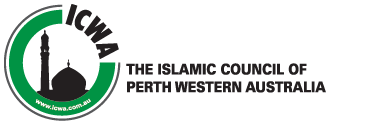Introduction
The isolation of Australia was not as total as some Eurocentric historians have asserted. The straits and seas to our north have been very busy routes for many centuries. Travellers in the region have included some of the outstanding figures of Islamic history and just how close they came is uncertain. However they did not leave their mark upon the place. The known history of Muslim contact is dominated by two outstanding factors, firstly that of European colonisation and secondly that of racial discrimination.
It was the spread of European settlement and administration which ejected the Muslim Macassans from trade and cultural contacts with northern Australian. Although there were desultory attempts to utilize that contact for the benefit of the British Empire, they came to nothing. The memory of the Macassans remained among the tribal peoples of the north but almost completely vanished from the consciousness of mainstream European Australia. The few Muslims present in the penal settlements of the east coast also failed to make an impact upon colonial society and went largely unnoticed by 200 years of Australian historical writing.
The growing demand from the east coast of the continent for new lands and for new mining areas, in the middle of the nineteenth century, facilitated the introduction of the camel and its appendage, the Muslim Afghan cameleer. These despised men had greater impact than previous Muslims but their vital importance in every exploratory expedition into central Australia from the Burke and Wills debacle until the 1939 crossing of the Simpson Desert, is still only dimly perceived by most modern Australians. Their role in the construction of the 1872 Overland Telegraph, in carrying supplies into the interior, keeping remote stations and settlements alive in the most severe drought, in providing water to desert mining towns for many years, was written out of the history books. Their role lasted for about fifty years. As the railways moved inland and as the 1901 Immigration Restriction Act and accompanying restrictive legislation killed off their businesses and their contacts with their home countries, their mosques and their faith faded from the scene.
The hawkers, whether Afghan or Indian, with their bases in the major cities, were also subjected to this harsh legislation and were, by their racial identification, alienated from the mainstream European community. Although there were signs of an embryonic Muslim community in both Sydney and Melbourne at the turn of the twentieth century, this also faded away. It was only in the far north, in the pearling areas, that non-Europeans were allowed to enter, under indenture to employers. This caused considerable controversy but as the industry was considered too demanding for European workers, the exceptions were permitted to continue for the duration of the life of the White Australia Policy. Malays were reluctantly allowed in.
It was not until the economic boom which occurred after the Second World War that a significant and permanent Muslim population established a base in this country. A dearth of European workers willing to migrate encouraged the Australian government to bring Turkish immigrants to fill the gap left. At about the same time that there was an increased demand for places from Lebanese wishing to immigrate. Since the early 1970s the various Muslim communities, now concentrated mainly in Melbourne and Sydney, have developed many mosques and Islamic schools and have begun to take their place in Australian society. This process has been encouraged by the adoption of a multicultural policy framework by all levels of Australian government. Although there are still points of friction between the institutions of Australian society and the Muslim community, it is establishing itself and shows none of the signs of impermanence associated with earlier Muslim communities in this country.
